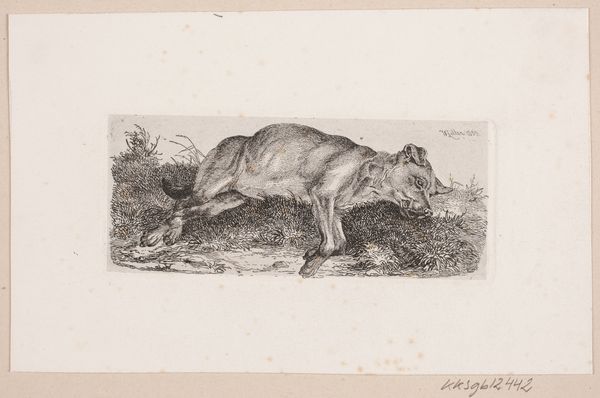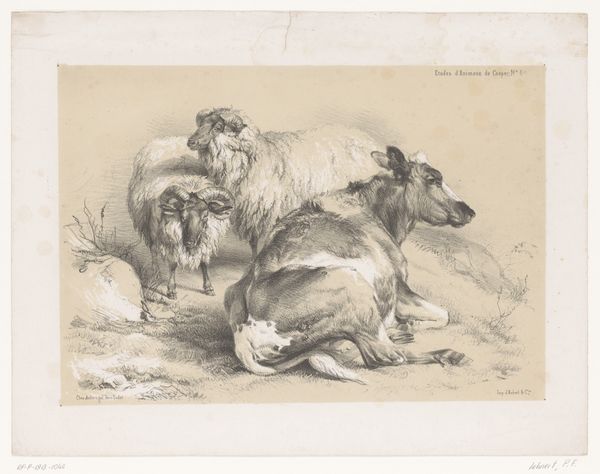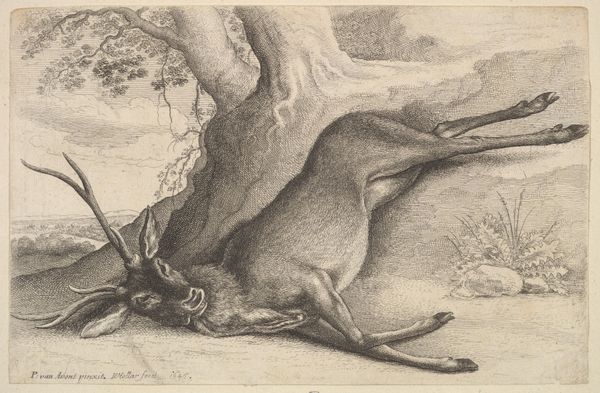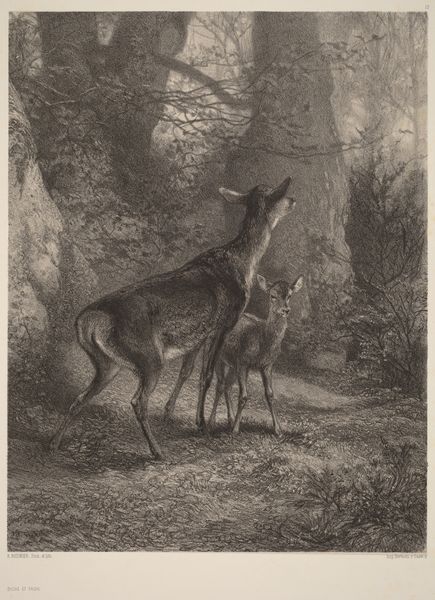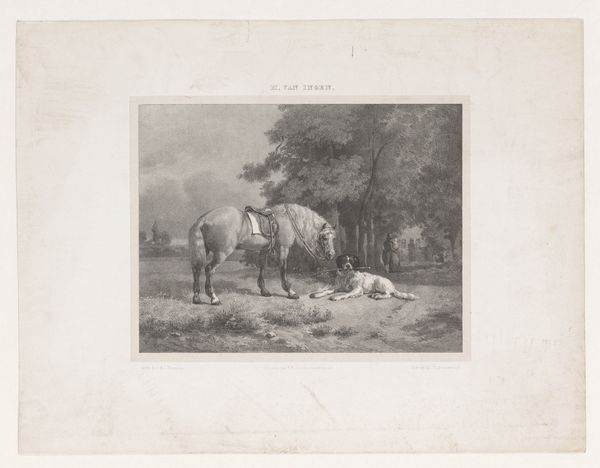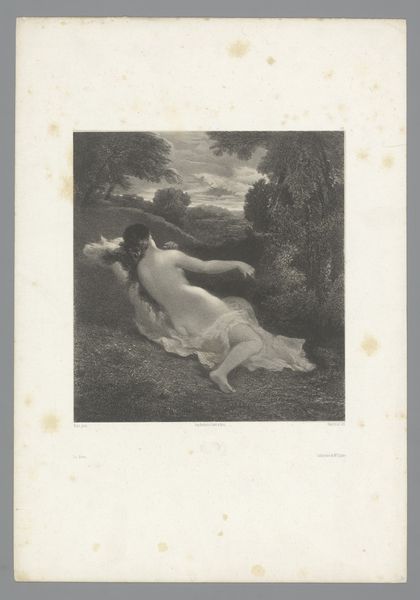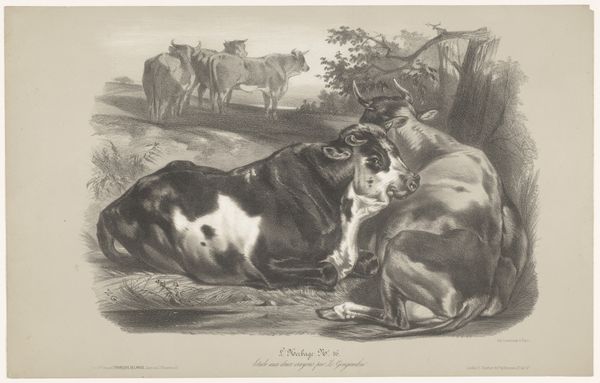
drawing, print, etching
#
drawing
# print
#
etching
#
landscape
#
academic-art
#
naturalism
#
realism
Dimensions: height 344 mm, width 242 mm
Copyright: Rijks Museum: Open Domain
Editor: This is "Dead Hare in a Field," an etching from 1855. It has a pretty melancholic feel. It’s so stark, just a dead animal sprawled in an otherwise pastoral landscape. What do you see in this piece? Curator: The depiction of a dead animal might seem straightforward, but in the context of 19th-century Europe, particularly with the rise of realism and naturalism, it speaks volumes. Consider the social implications. Who is afforded dignity, even in death? Is it only humans, or can an artist elevate an animal to that level? Does the choice of a hare – historically a symbol of vulnerability and the hunted – comment on class structures? Editor: That’s a perspective I hadn’t considered. I was so focused on the sort of grim beauty of it. You're making me think about it in terms of power dynamics. Curator: Precisely! Think about the rise of industrialization. As landscapes were being altered and wildlife displaced, artists began engaging with nature in new ways. The “natural” world was becoming increasingly political. Does this work become a critique, or even a eulogy for a fading way of life? Editor: So, the image of a dead hare could be about more than just the death of an animal? Curator: Absolutely. Consider it through the lens of feminist theory. Nature is often feminized; is there a commentary being made here about the vulnerability of the female body? Who is entitled to represent this scene, and to what end? What power is embedded in the artist’s gaze? Editor: Wow, I definitely have a lot to think about. Thanks for making me see it in such a different light. Curator: Art should prompt such reflections. Examining art within broader social and political contexts encourages a more nuanced understanding of the human experience.
Comments
No comments
Be the first to comment and join the conversation on the ultimate creative platform.
